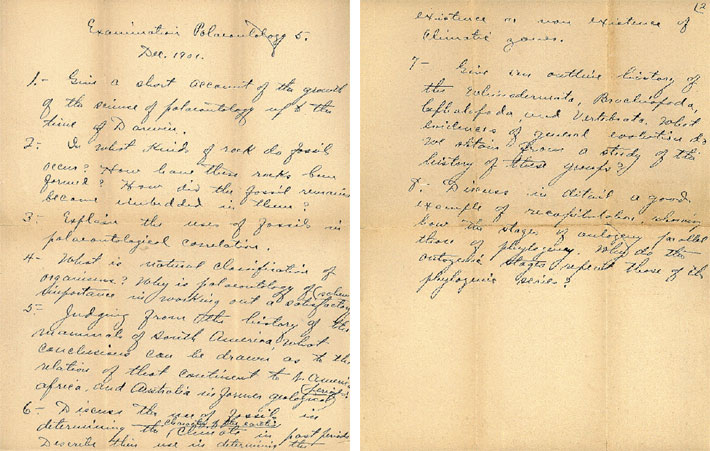|
A transcription of the exam:
- Give a short account of the growth of the science of palaeontology
up to the time of Darwin.
- In what kinds of rock do fossils occur? How have these rocks been
formed? How did the fossil remains become embedded in them?
- Explain the uses of fossils in palaeontological correlation.
- What is natural classification of organisms? Why is palaeontology of
importance in working out a satisfactory scheme?
- Judging from the history of the mammals of South America, what
conclusions can be drawn as to the relations of that continent to N. America,
Africa, and Australia in former geological periods?
- Discuss the use of fossils in determining the character of the earth's
climate in past periods. Describe this use in determining the existence or
non existence of climatic zones.
- Give an outline history of the Echinodermata, Brachiopoda, Cephalopoda,
and Vertebrata. What evidences of general evolution do we obtain from a study
of the history of these groups?
- Discuss in detail a good example of recapitulation, showing how the
stages of ontogeny parallel those of phylogeny. Why do the ontogenetic stages
repeat those of the phylogenic series?
View other documents
and photographs from the UCMP collections.
|

